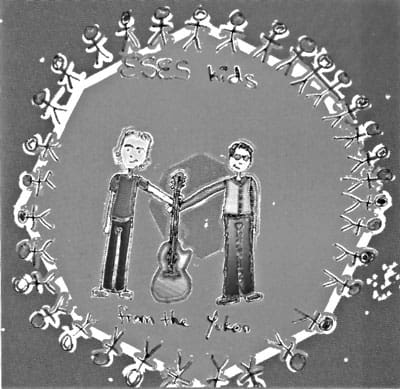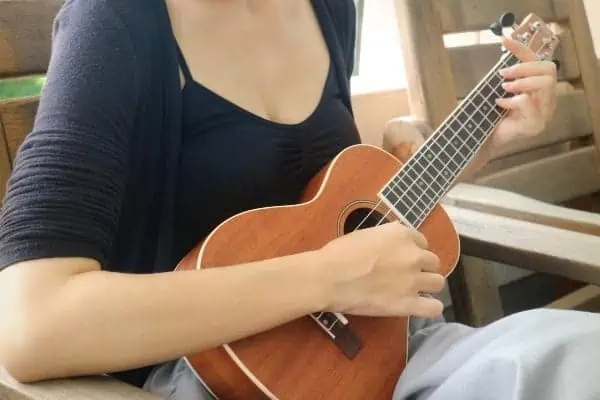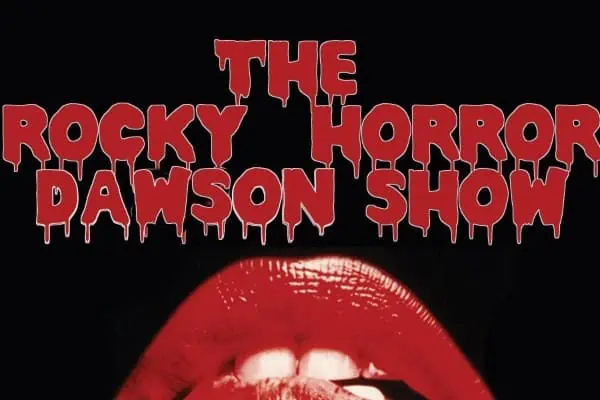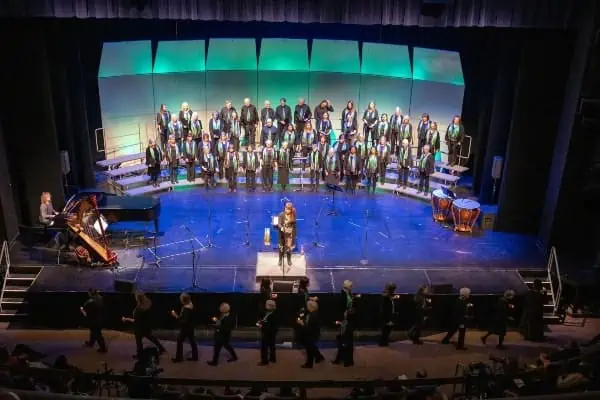 The Southern Tutchone language CD, entitled Dakwanjenaats u al, has a purpose: The English translation is “Let’s Pick Up Our Language Again”. Wise people say, “Language is culture.” That is one reason why Dakwanje naats u al (and I apologize here for owning a computer that doesn’t have the proper accents for the correct spelling) is an important recording. Another is the inclusion of a large swath of age groups. Those involved are from six to 60 or thereabouts. This shows it is not just the young who can learn the lesson of language. The CD starts with the Canadian national anthem sung in Southern Tutchone. There is a unique beauty of hearing such a familiar melody done in a language other than English or French. This is followed by a Welcoming Song that is a standard practice at gatherings of note in aboriginal cultures.
The Southern Tutchone language CD, entitled Dakwanjenaats u al, has a purpose: The English translation is “Let’s Pick Up Our Language Again”. Wise people say, “Language is culture.” That is one reason why Dakwanje naats u al (and I apologize here for owning a computer that doesn’t have the proper accents for the correct spelling) is an important recording. Another is the inclusion of a large swath of age groups. Those involved are from six to 60 or thereabouts. This shows it is not just the young who can learn the lesson of language. The CD starts with the Canadian national anthem sung in Southern Tutchone. There is a unique beauty of hearing such a familiar melody done in a language other than English or French. This is followed by a Welcoming Song that is a standard practice at gatherings of note in aboriginal cultures.
Many of the songs are given a brief spoken introduction to clarify its significance and place in the aboriginal world. These are helpful in giving information as well as drawing the listener in.Following the Welcome Song is the Elijah Smith Elementary School Song sung by no less than 52 students. After this heartfelt rendition comes two songs from Elder Polly Fraser. One, entitled simply Polly’s Song, had me wishing I could understand the language, which of course is the general idea behind this project. The next song was titled, The Green Song, and this time I wished there was just a little more info given about its content. After hearing from the old it was time for the young. Six nursery rhymes are used and,while the words may not be familiar, the melodies are immediately recognizable. Mary Had a Little Lamb, Row, Row,Row your Boat and Twinkle, Twinkle Little Star ring outwith a whole new sound. Next is Elder Bessie Allen with her rendition of a traditional song called, Fox Singing to the Wind.
Just the title had me transported to a place in the wild where the purity of nature gives a rebirth to the spirit. The Dakwakada Dancers then work their magic with four tunes. One is homage to ElderAnnie Ned, while the other three are traditional tunes with simple titles: The Owl Song, the Crow Song and the Lista Hanky Song are accompanied by hand drum percussion and, while brief, convey a sense of a culture that goes very far back in time.
Fraser then returns, this time with a legend about a spider anda net. This story is told in both Southern Tutchone and English.Finishing the CD is a song written by Jim Vautour and performed by the Silver Ravens. Titled, Two Thousand Drums, this song is performed in Southern Tutchone and English. This song is also the only song that uses the full complement of instruments that we normally associate with radio and television music. All of the tunes, except Two Thousand Drums, are either acappella, underscored with hand drums or, in the case of the nursery rhymes, use a single acoustic guitar. While each song gave a slightly different feel, it was the tempo alone that brought out various reactions in me.
Not being of aboriginal descent and not able to speak Southern Tutchone, I found the voice became another instrument. It was the tempos that inspired certain reactions in me. A faster song gave me hope and energy while the slower tempo would often create a bittersweet reaction. With no lyrics that I could understand, each song would conjure up a mood, and I did find that unusual. How many pop tunes would fly if their lyrics were in a language other than our own? Hard to say. However, it does show one that a song needs more than just catchy lyrics to truly stay in the head. One indication that these songs have an impact is that I would wake up in the morning and have the melody of one running through my head. I have always taken that’s an indication of worth. This project was the result of a host of contributors and participants and one can only hope that is has the desired impact of sparked renewed interest in young and old both to embrace their language. While there are too many to mention by name, a few should be acknowledged: Gary Lachance was the executive producer, Rob Hunter, the musical coordinator and Tim Naylor was the musical consultant.
Along with these three are many aboriginal and Yukon government departments. While the production is by no means perfect, it need not be anyway. The whole idea was to have real people showing their spirit and enjoyment of their culture and on that level it sings and speaks to the heart.
Sharing Northern Tutchone stories, culture and heritage—one bar at a time




